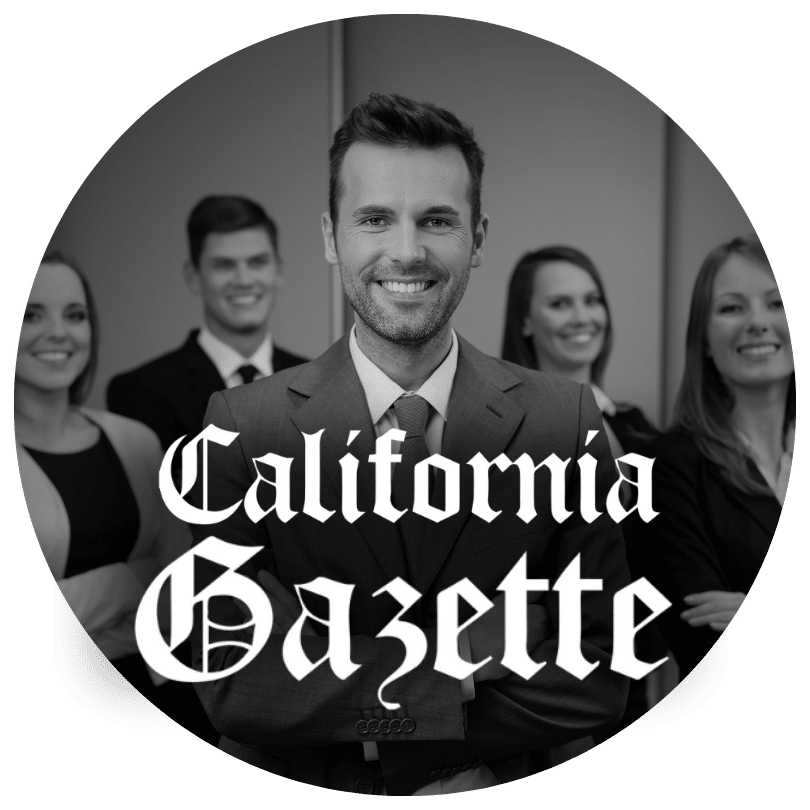Inclusive communication is the main key to a respectful and welcoming environment, ensuring that everyone feels seen, heard, and valued. It’s about fostering a sense of belonging by using language and behaviors that embrace diversity and avoid exclusion. This means prioritizing people-first language, where we focus on the individual rather than their characteristics. For instance, instead of saying “disabled person,” we say “person with a disability,” recognizing their personhood first and foremost.
To communicate inclusively, we must actively challenge stereotypes and avoid making assumptions based on gender, race, ethnicity, age, or any other personal attribute. Each person is unique, and our communication should reflect that individuality. Being mindful of pronouns and using inclusive language further demonstrates respect for diverse identities and avoids perpetuating harmful biases.
Listening actively and with an open mind is crucial for understanding different perspectives and building meaningful connections. By being receptive to new ideas and willing to learn about diverse cultures, we can avoid unintentional biases in our communication. Treating everyone with dignity and respect, even in disagreement, fosters a positive and inclusive atmosphere.
Recognizing our own biases and seeking feedback on our communication style are essential steps towards continuous improvement. Inclusive communication is a journey, not a destination, and it requires ongoing effort and self-reflection. By practicing and refining our skills, we can create a world where everyone feels valued and respected.
What is inclusive communication, and why is it important?
Inclusive communication is a way of communicating that makes everyone feel welcome, valued, and respected, regardless of their background, identity, or abilities. It involves being mindful of our words and actions and trying to understand and connect with people from all walks of life.
Inclusive communication fosters a sense of belonging and creates a more welcoming environment for everyone. It promotes diversity and inclusion, essential for building strong and successful teams and organizations. When people feel included, they are more likely to be engaged, productive, and satisfied in their work and personal lives.
How to Communicate Inclusively with Everyone? Creating a Respectful and Welcoming Environment
To create a respectful and welcoming environment through inclusive communication, it’s important to:
- Use inclusive language: Avoid using discriminatory, stereotypical, or offensive language. Instead, choose words that are respectful and inclusive of all people.
- Be mindful of nonverbal communication: Our body language, facial expressions, and tone of voice can all convey messages that may be unintentional or unconscious. Pay attention to your nonverbal cues and ensure they are consistent with your verbal message.
- Listen actively: Give your full attention to the person speaking and try to understand their perspective. Ask clarifying questions and reflect back what you hear to ensure understanding.
- Be open to feedback: Be willing to receive feedback about your communication style and adjust as needed.
Benefits for Individuals:
- Improved Collaboration and Teamwork: Inclusive communication creates an environment where everyone feels comfortable sharing their perspectives and ideas. This diversity of thought leads to more creative solutions and better decision-making.
- Greater Diversity and Inclusion: Inclusive communication helps attract and retain a diverse workforce by valuing and respecting differences. This diversity brings a wider range of experiences, skills, and perspectives.
- Reduced Discrimination and Conflict: Inclusive communication promotes understanding and empathy, reducing the likelihood of misunderstandings and conflicts arising from stereotypes or biases.
Benefits for Organizations:
- Enhanced Innovation and Creativity: A diverse and inclusive workplace fosters a culture of innovation, as employees feel empowered to share their unique ideas and perspectives.
- Increased Employee Engagement and Satisfaction: When employees feel valued and included, they are more likely to be engaged in their work, leading to higher productivity and lower turnover rates.
- Improved Reputation and Brand Image: Organizations that prioritize inclusive communication are seen as more socially responsible and attractive to potential employees and customers.
How do I identify my own biases to avoid perpetuating them?
Everyone has biases, whether we realize it or not. These are often unconscious preferences or assumptions we hold about people based on their gender, race, age, ability, or other characteristics. Recognizing our own biases is a crucial first step towards communicating more inclusively.
Identifying and Addressing Biases
Common Biases Hindering Communication
- Gender bias: Favoring one gender over another, often manifested in stereotypes about roles and abilities.
- Racial bias: Making assumptions or judgments about people based on their race or ethnicity.
- Ableism: Discriminating against people with disabilities, often by assuming they are less capable.
- Ageism: Holding negative stereotypes about people based on their age, such as assuming older people are less competent or younger people are less experienced.
Identifying Your Own Biases
- Self-reflection: Take time to examine your own beliefs and assumptions. Ask yourself questions like: “Do I make assumptions about people based on their appearance or background? Do I treat people differently because of their age or gender?”
- Seek feedback: Ask trusted friends, colleagues, or mentors for honest feedback about your communication style. They may be able to point out blind spots or areas where you could improve.
- Implicit Association Test (IAT): This online test measures your unconscious associations about different social groups. While not perfect, it can be a helpful tool for revealing hidden biases.
- Pay attention to your language: Notice the words and phrases you use when talking about different groups of people. Are you using stereotypes or generalizations?
- Challenge your assumptions: When you find yourself making an assumption about someone, pause and question it. Is it based on evidence, or is it a stereotype?
Strategies for Mitigating Bias
Once you become aware of your biases, the next step is to actively work on reducing their influence on your communication and actions. Here are some strategies to mitigate bias:
- Choosing words and phrases carefully: The language we use can unintentionally perpetuate stereotypes or exclude certain groups. Be mindful of the words you choose, avoiding generalizations or terms that could be offensive. For instance, instead of saying “This is a man’s job,” use “This is a job that requires strength.”
- Challenging stereotypes and assumptions: When you notice yourself or others making assumptions about people based on their characteristics, take a moment to question those assumptions. Are they based on facts or stereotypes? Remember that everyone is an individual with unique experiences and perspectives.
- Seeking out diverse perspectives: Actively engage with people from different backgrounds and cultures. Listen to their stories, understand their experiences, and learn from their perspectives. This can broaden your understanding of the world and challenge your own biases.
- Educate yourself: Learn about different cultures, social groups, and the history of discrimination. The more you know, the better equipped you’ll be to recognize and challenge your own biases.
- Practice empathy: Try to put yourself in someone else’s shoes and see the world from their perspective. This can help you understand their experiences and challenges, and reduce your tendency to judge based on your own limited viewpoint.
- Be open to feedback: Ask trusted friends or colleagues to provide feedback on your communication and behavior. They may notice biases that you’re not aware of. Be open to hearing their feedback and take it as an opportunity for growth.
How do I make my language more inclusive?

Making your language more inclusive is about respecting everyone’s identity and experiences. It’s a way to ensure everyone feels seen, heard, and valued in your conversations. Here’s how you can adapt your language to be more inclusive:
- Using Gender-Neutral Pronouns: Instead of using “he” or “she” when referring to someone whose gender you don’t know or when speaking about a general person, use “they,” “them,” and “their.” For example, instead of saying, “Each employee should clean his desk,” say, “Each employee should clean their desk.” This small change respects individuals who identify as non-binary or gender-nonconforming.
- Avoiding Stereotypes and Assumptions: Be mindful of the words you choose and avoid generalizations based on someone’s race, ethnicity, gender, sexual orientation, age, or ability. For instance, instead of saying, “The old man is slow,” say, “The gentleman is taking his time.” This avoids perpetuating harmful stereotypes and recognizes individual differences.
- Choosing Respectful Terminology: Use language that puts the person first. For example, instead of “disabled person,” say “person with a disability.” This emphasizes the individual rather than their condition. Additionally, use terms that people prefer to describe themselves. If you’re unsure, politely ask.
Additional Tips:
- Avoid slang or jargon: Not everyone may understand informal language or technical terms. Use clear, simple language that everyone can easily comprehend.
- Be mindful of cultural references: What may be humorous or acceptable in one culture may be offensive in another. Be sensitive to cultural differences and avoid jokes or references that could be hurtful.
- Ask for feedback: If you’re unsure if your language is inclusive, ask for feedback from friends, colleagues, or people from diverse backgrounds. They can offer valuable insights and help you improve your communication.
What are specific strategies for communicating inclusively in different settings (workplace, social gatherings, online)?
This involves adapting your communication style to different settings while being mindful of individual differences. Here’s how to communicate inclusively in various situations:
1. Active Listening:
- In the Workplace: Pay close attention to your colleagues’ words and body language. Ask clarifying questions to ensure you understand their perspective fully. This fosters trust and collaboration.
- In Social Gatherings: Show genuine interest in what others are saying. Maintain eye contact, nod your head, and offer verbal cues like “I see” or “Tell me more.” This makes people feel heard and appreciated.
- Online: When communicating through text or video, actively engage in the conversation. Avoid distractions and respond thoughtfully to messages. Use emojis or emoticons to convey tone and express empathy.
2. Asking Open-Ended Questions:
- In the Workplace: During meetings or discussions, ask questions that encourage deeper thinking and diverse opinions. This can lead to better solutions and a more inclusive decision-making process.
- In Social Gatherings: Instead of asking questions with simple “yes” or “no” answers, ask open-ended questions that invite people to share their experiences and thoughts. This promotes meaningful conversations and deeper connections.
- Online: When participating in online forums or discussions, ask questions that spark thoughtful conversations rather than just stating your opinion. This fosters a more inclusive and engaging environment.
3. Nonverbal Communication:
- In the Workplace: Be mindful of your body language, facial expressions, and tone of voice. Maintain an open posture, make eye contact, and use a friendly tone. This creates a welcoming atmosphere and encourages others to participate.
- In Social Gatherings: Show you are engaged in the conversation through your body language. Smile, nod, and lean towards the speaker to show interest and respect. Avoid crossing your arms or looking away, as this can signal disinterest.
- Online: While nonverbal cues can be limited in online communication, use emojis or emoticons to express your emotions and reactions. If possible, use video calls to enhance nonverbal communication and build rapport.
4. Adapting Communication Style:
- In the Workplace: Tailor your communication to suit the formality of the situation and your audience’s roles and seniority. Use professional language in meetings and presentations, but adopt a more casual style during informal conversations.
- In Social Gatherings: Be mindful of the group dynamics and adapt your communication style accordingly. Use humor and lightheartedness when appropriate, but be sensitive to others’ feelings and avoid topics that could be divisive or offensive.
- Online: Consider the platform you are using and adjust your communication style to fit the norms of that platform. Be mindful of the potential for misunderstandings and use clear, concise language to avoid confusion.
5. Creating Safe Spaces:
- In the Workplace: Foster an environment where employees feel comfortable sharing their ideas and opinions without fear of judgment or reprisal. Encourage open dialogue and create opportunities for employees to share their experiences and perspectives.
- In Social Gatherings: Be a welcoming and inclusive host. Create an atmosphere where everyone feels comfortable and accepted. Encourage participation from all attendees and avoid topics or activities that could exclude certain individuals or groups.
- Online: Establish clear guidelines for online discussions and forums to ensure a respectful and inclusive environment. Moderate conversations to prevent harassment or discrimination.
6. Being Mindful of Cultural Differences:
- In the Workplace: Be aware of cultural differences in communication styles, values, and beliefs. Avoid making assumptions based on stereotypes and be open to learning about different cultures.
- In Social Gatherings: Respect cultural customs and traditions. Be mindful of how your words and actions might be interpreted by people from different backgrounds.
- Online: Research cultural norms and sensitivities before engaging with people from different cultures online. Avoid making generalizations or using language that could be considered offensive.
How do I respond to non-inclusive language or behavior from others?
Responding to non-inclusive language or behavior can be challenging, but it’s crucial for fostering an inclusive environment. Here are some strategies to address such situations effectively:
1. Responding to Microaggressions
Microaggressions are subtle comments or actions that, while often unintentional, can be hurtful and exclusionary. When faced with a microaggression, you can:
- Name it: Explain why the comment or action was hurtful or offensive. For example, “When you said _____, it made me feel _____ because _____.”
- Educate: Help the person understand the impact of their words or actions. You could say, “Perhaps you didn’t realize, but that comment can be interpreted as _____.”
- Set boundaries: Clearly communicate what kind of behavior is unacceptable to you. For instance, “I would appreciate it if you wouldn’t make jokes about _____.”
2. Speaking Up Against Discriminatory Language
When you hear someone using discriminatory language, it’s important to speak up. You can:
- Be direct: Politely but firmly explain why the language is inappropriate. For example, “That term is considered offensive because _____.”
- Use “I” statements: Frame your response in terms of how the language affects you personally. For instance, “I feel uncomfortable when you use that word because _____.”
- Offer alternatives: Suggest more inclusive language options. “Instead of saying _____, you could say _____.”
3. Offering Constructive Feedback
If someone’s behavior is non-inclusive, provide feedback in a respectful and constructive manner. Focus on the behavior itself rather than attacking the person. For example, “I noticed that you interrupted _____ several times during the meeting. It might be helpful to let everyone share their thoughts fully.”
4. Educating Others
Help others understand the importance of inclusive communication. Share articles, resources, or personal experiences to raise awareness and encourage them to adopt more inclusive language and behavior.
Remember, responding to non-inclusive behavior can be challenging, but it’s important to speak up and advocate for yourself and others. By addressing these issues in a constructive and educational way, you can help create a more inclusive and respectful environment for everyone.






